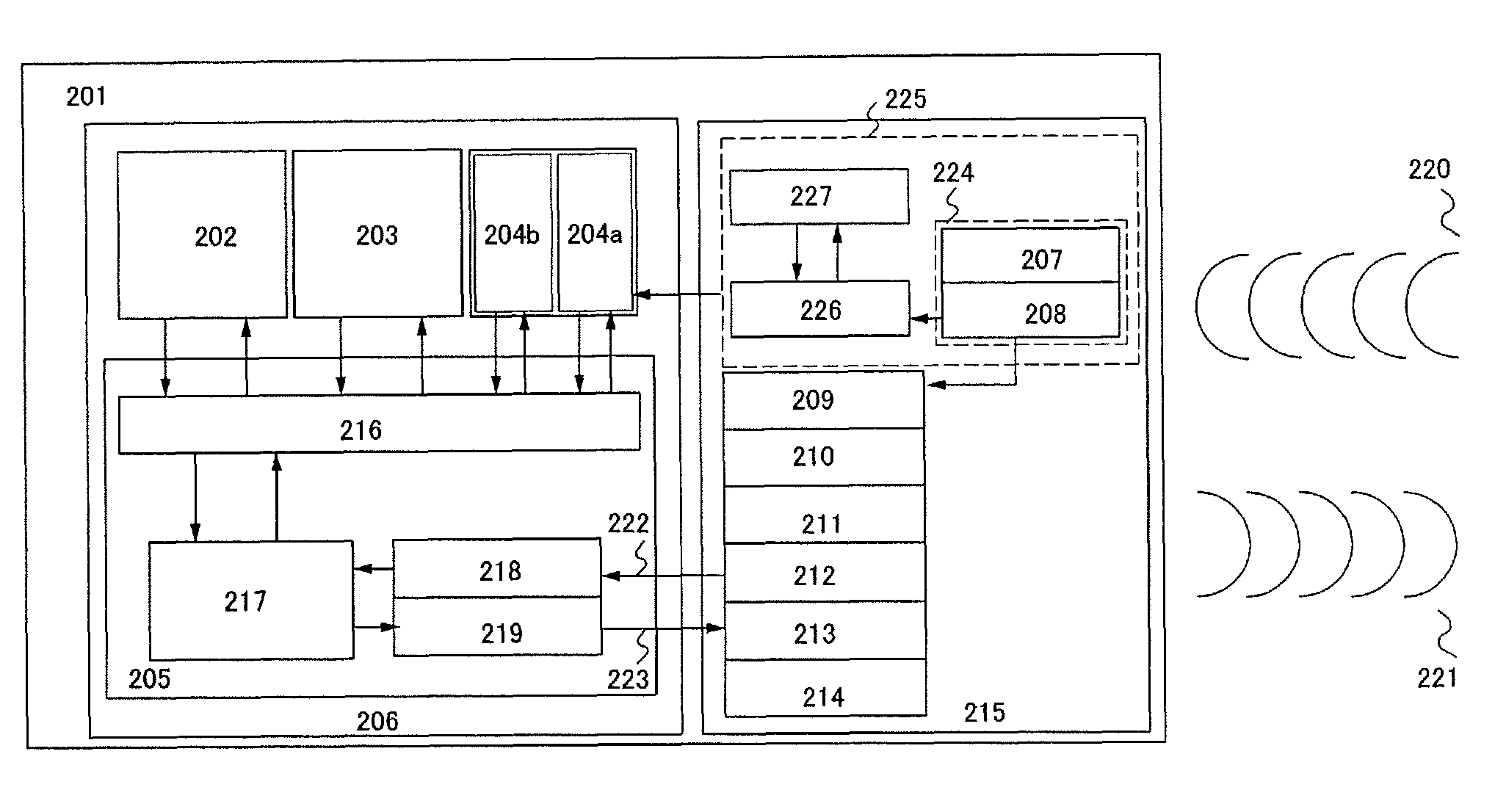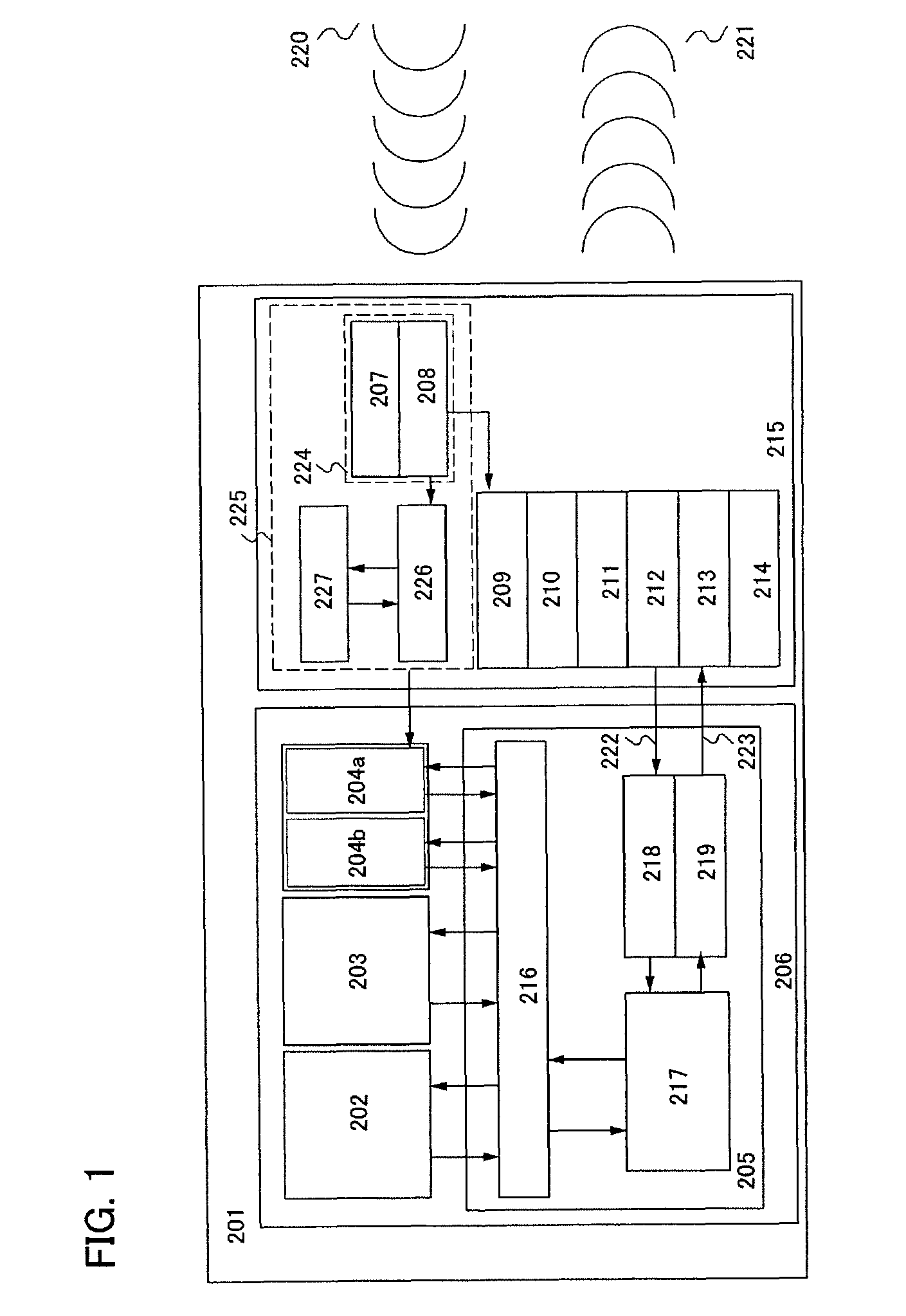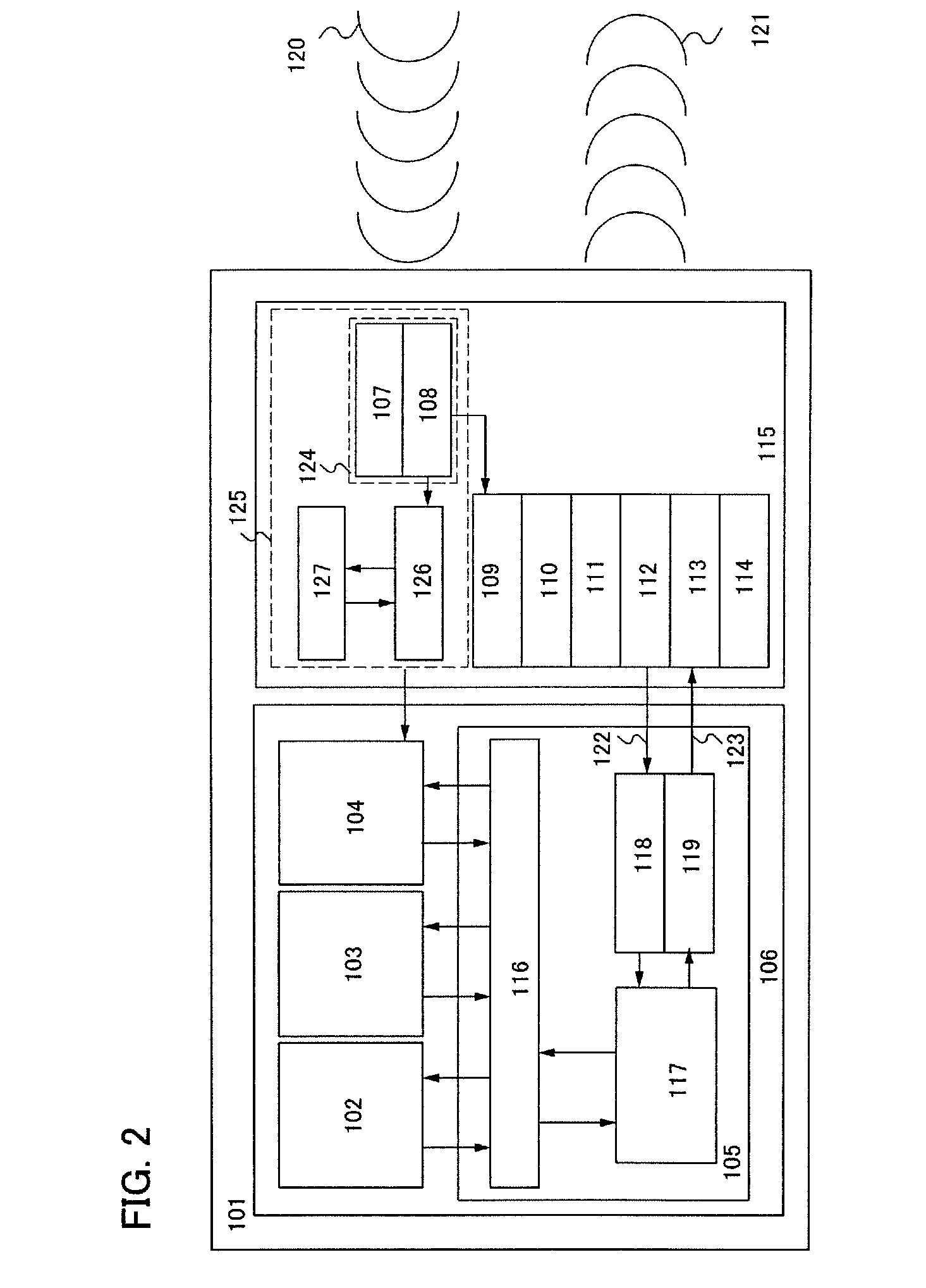Semiconductor device
a wireless communication and semiconductor technology, applied in secondary cells, electrochemical generators, instruments, etc., can solve the problems of unsuitable product management, long response time of wireless tags, and inability to supply constant electricity to tags, etc., to achieve high-speed operation of cpu systems, speed up memory operation, and reduce production costs
- Summary
- Abstract
- Description
- Claims
- Application Information
AI Technical Summary
Benefits of technology
Problems solved by technology
Method used
Image
Examples
embodiment mode 1
[Embodiment Mode 1]
[0028]When an SRAM provided with a wireless power storage unit is used as a memory for storing program data of a semiconductor device, program data can also be stored even when a power supply is off. Moreover, by using the SRAM, high-speed reading, writing, and erasing during memory access of a CPU can be achieved. Since writing and rewriting of program data is also possible, a semiconductor device provided with a CPU system in accordance with an application can be produced. Hereinafter, a structure and operation of the semiconductor device will be described.
[0029]FIG. 1 illustrates a block diagram of the semiconductor device.
[0030]As shown in FIG. 1, a semiconductor device 201 includes a logic portion 206, and an analog portion 215. The logic portion 206 includes a CPU 202, a mask ROM 203, an SRAM 204a, an SRAM 204b, and a controller 205. The analog portion 215 includes a power supply circuit 209, a reset circuit 210, a clock generation circuit 211, a demodulatio...
embodiment mode 2
[Embodiment Mode 2]
[0044]In this embodiment mode, a semiconductor device including a CPU and an SRAM provided with a wireless power storage unit will be described. FIG. 2 illustrates a block diagram of the semiconductor device in this embodiment mode.
[0045]The block structure of the semiconductor device will be described with reference to FIG. 2. In FIG. 2, a semiconductor device 101 includes a logic portion 106 and an analog portion 115. The logic portion 106 includes a CPU 102, a mask ROM 103, an SRAM 104, and a controller 105. The analog portion 115 includes a power supply circuit 109, a reset circuit 110, a clock generation circuit 111, a demodulation circuit 112, a modulation circuit 113, a power supply management circuit 114, and a wireless power storage unit 125. The wireless power storage unit 125 includes a antenna circuit 124, a power supply portion 126, and a power storage device 127. The antenna circuit 124 includes an antenna 107 and a resonance circuit 108.
[0046]The co...
embodiment mode 3
[Embodiment Mode 3]
[0058]Next, an exemplary structure of a semiconductor device 800 will be described with reference to FIG. 3. FIG. 3 is a block diagram of the semiconductor device 800. The semiconductor device 800 includes an antenna circuit 801, a signal processing circuit 802, and a power storage device 803.
[0059]The antenna circuit 801 transmits and receives signals. The antenna circuit 801 detects signals whose frequency corresponds to a form of the antenna circuit. A signal received by the antenna circuit 801 is converted into a DC power supply by the signal processing circuit 802 so that electricity is supplied to the power storage device 803.
[0060]A so-called storage battery (battery) can be applied to the power storage device 803. For example, a secondary battery such as a lithium-ion battery, a lithium secondary battery, a nickel hydride battery, a nickel-cadmium battery, an organic radical battery, a lead storage battery, an air secondary battery, a nickel-zinc battery, ...
PUM
 Login to View More
Login to View More Abstract
Description
Claims
Application Information
 Login to View More
Login to View More - R&D
- Intellectual Property
- Life Sciences
- Materials
- Tech Scout
- Unparalleled Data Quality
- Higher Quality Content
- 60% Fewer Hallucinations
Browse by: Latest US Patents, China's latest patents, Technical Efficacy Thesaurus, Application Domain, Technology Topic, Popular Technical Reports.
© 2025 PatSnap. All rights reserved.Legal|Privacy policy|Modern Slavery Act Transparency Statement|Sitemap|About US| Contact US: help@patsnap.com



